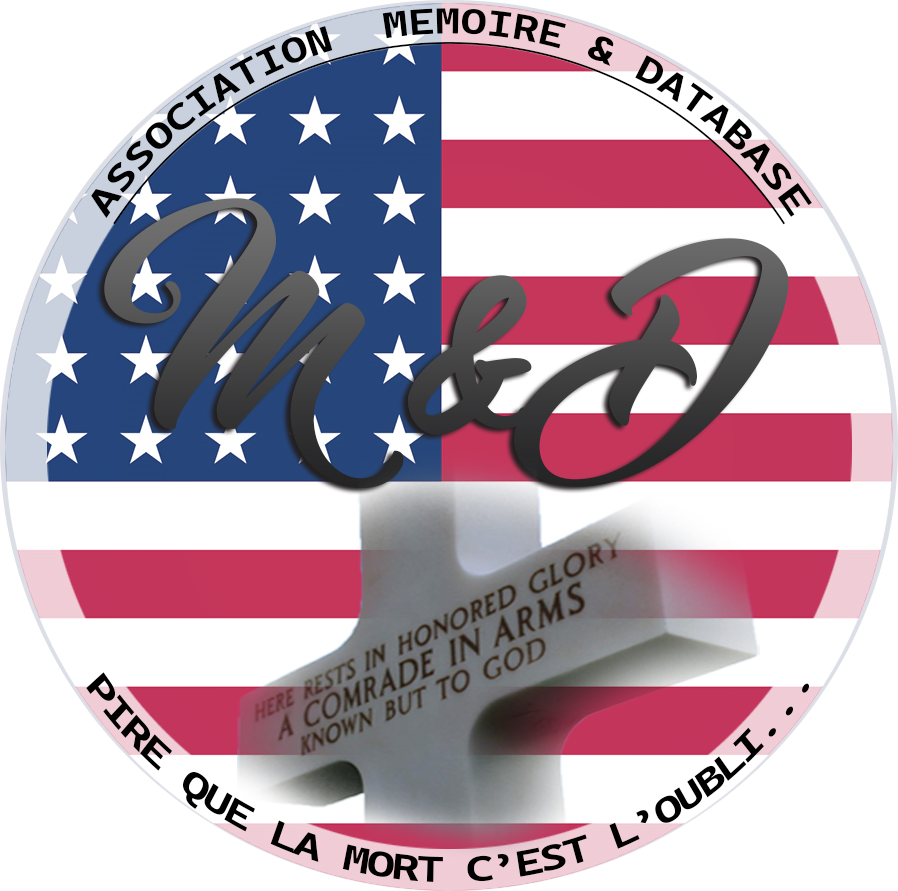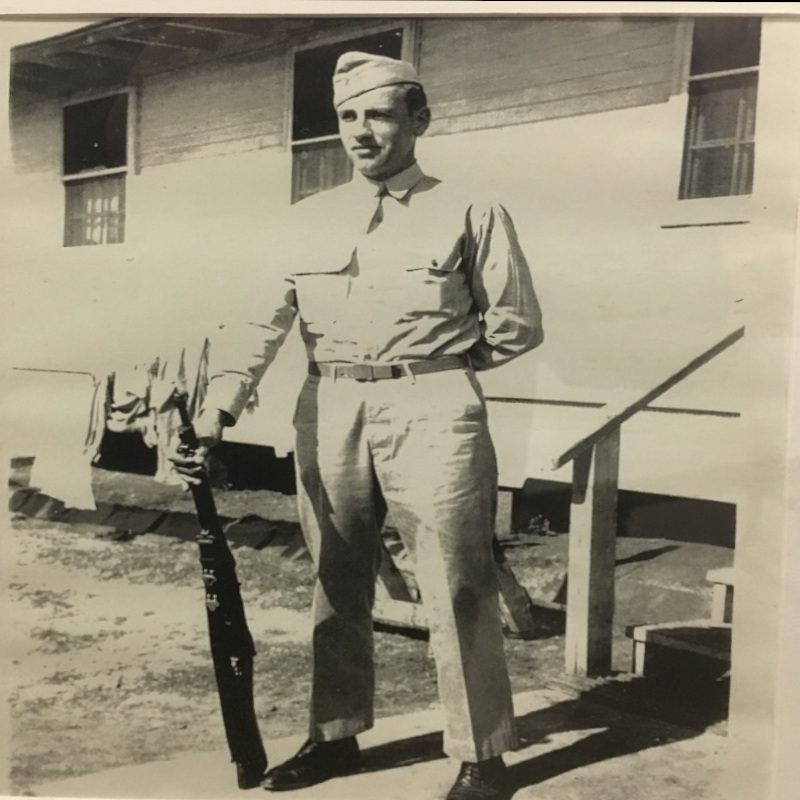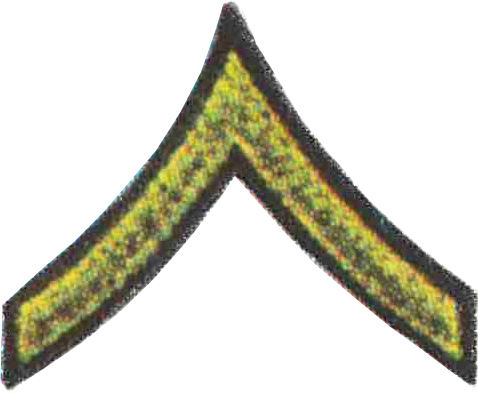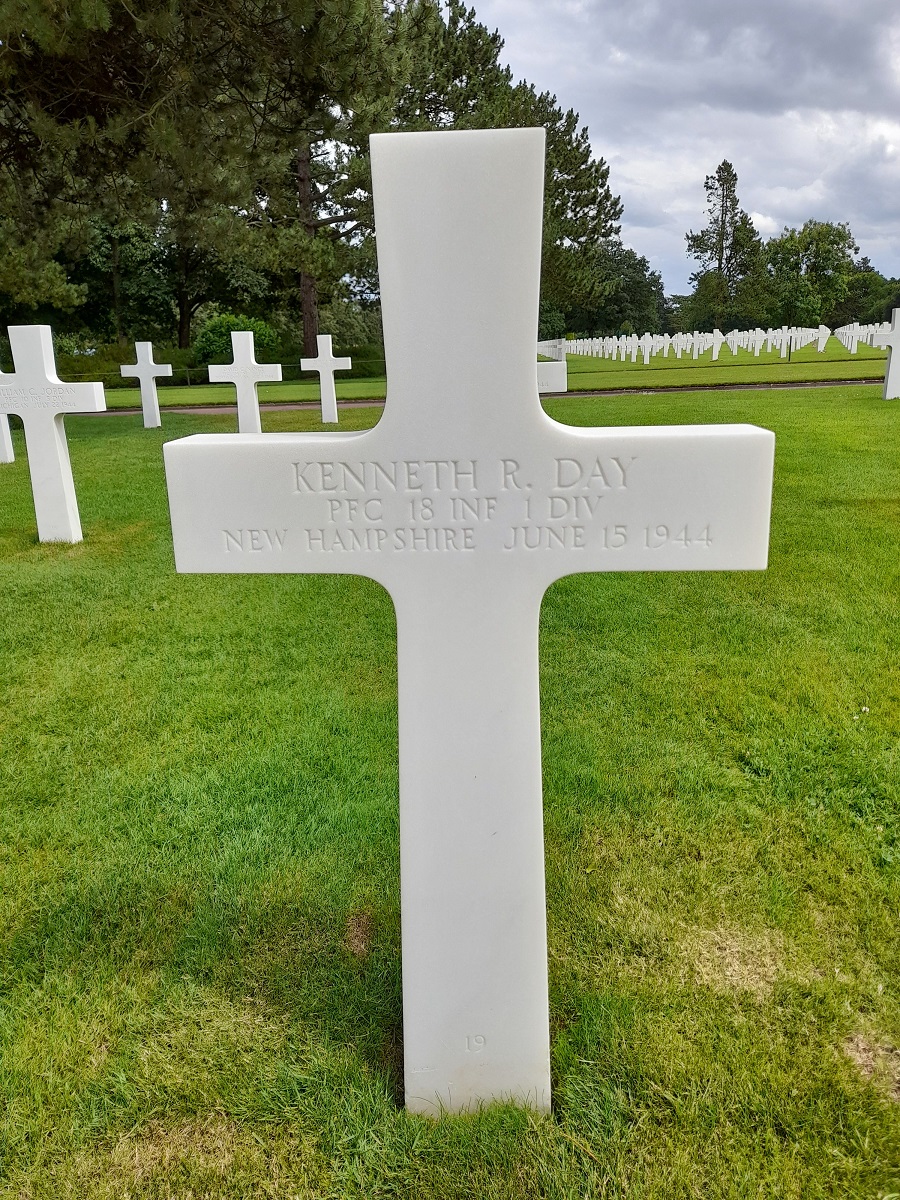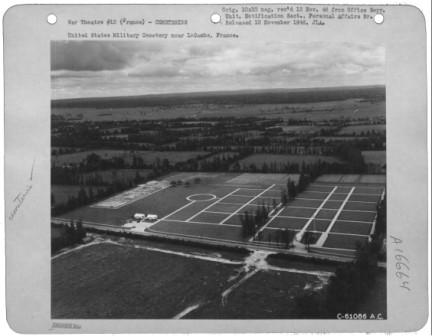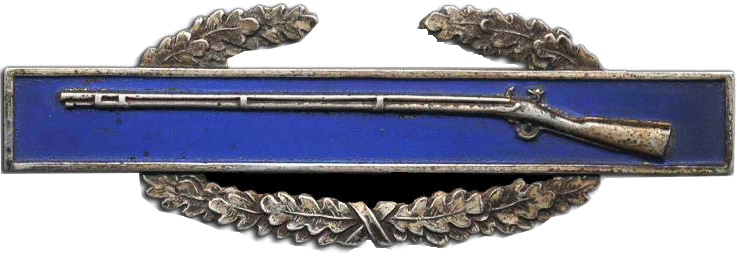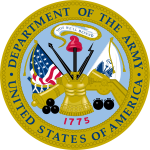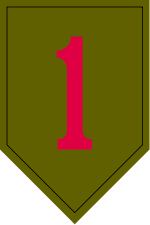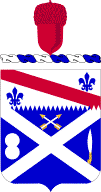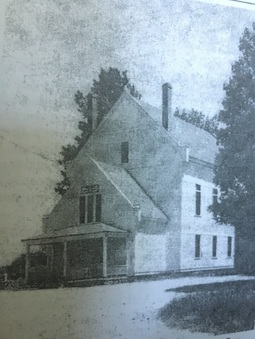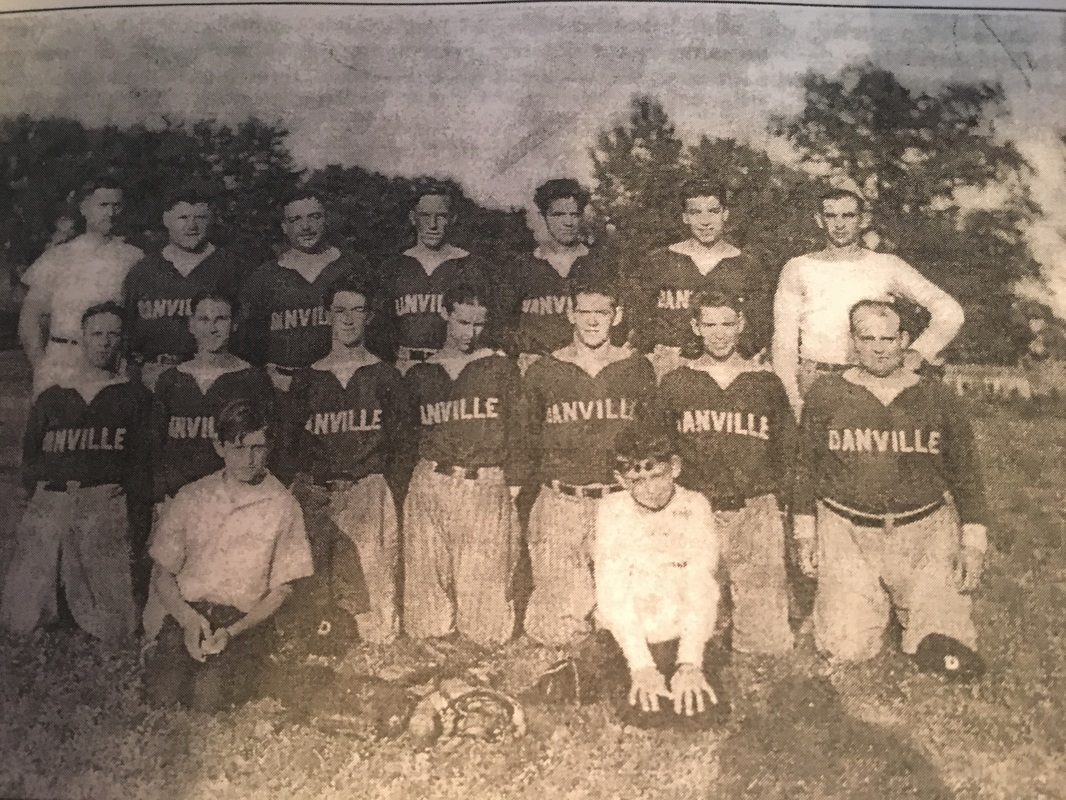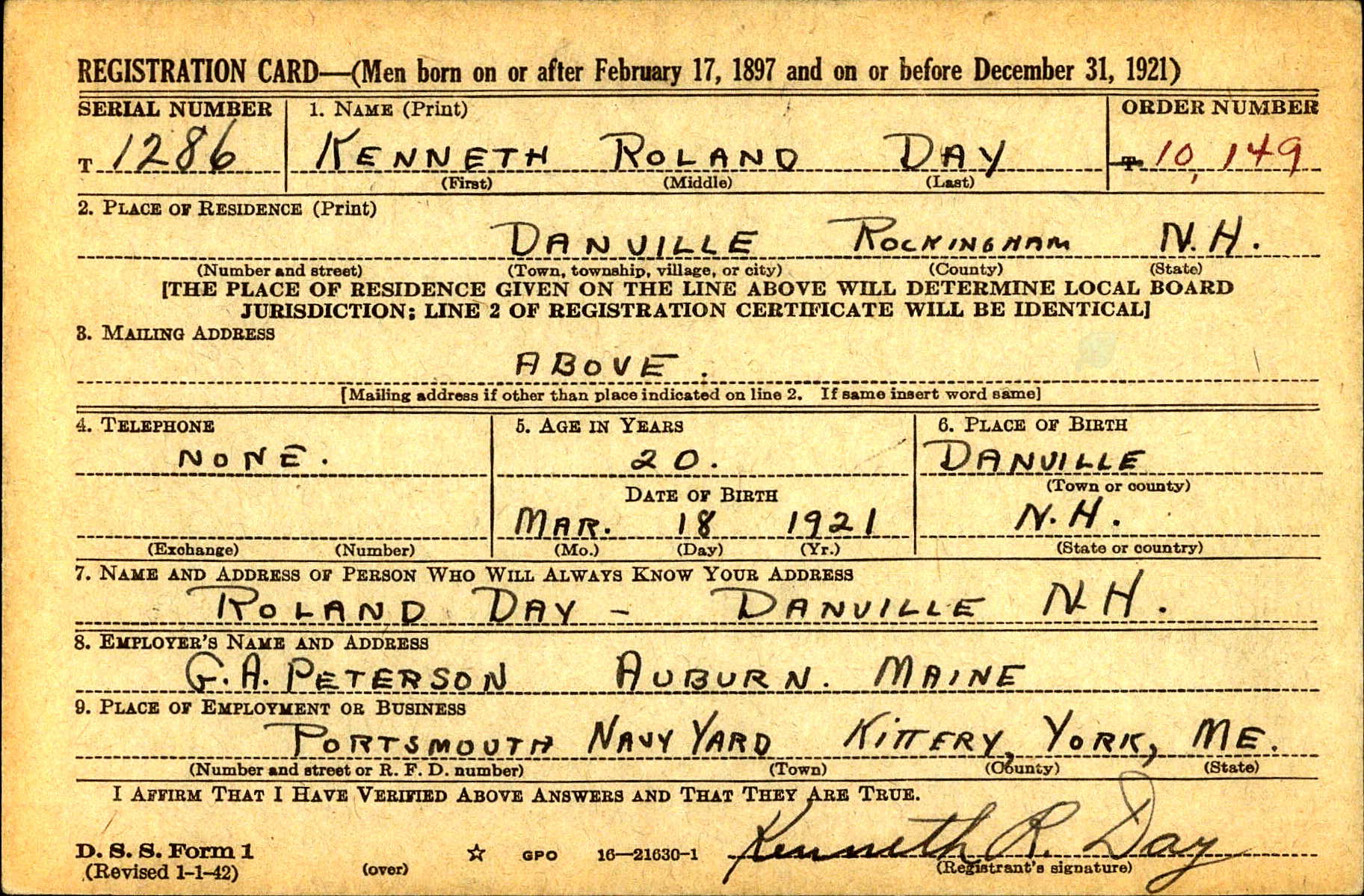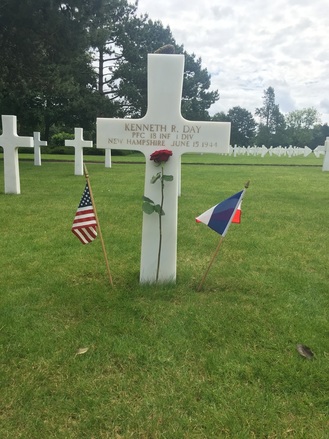|
Kenneth Roland DAY
| |||||||
|---|---|---|---|---|---|---|---|
|
Source : Nhdsilentheroes.org
| |||||||
| NUMBER OF SERVICE | 31110989 | ||||||
| AGE | 23 yo | ||||||
| DATE OF BIRTH | 18 March 1921 Danville, Rockingham County, NEW HAMPSHIRE | ||||||
| ENLISTMENT STATE | NEW HAMPSHIRE | ||||||
| FAMILY | Single | ||||||
| RANK |
| ||||||
| FONCTION | Fonction | ||||||
| JOB BEFORE ENLISTEMENT | Carpenters apprentices |  | |||||
| DATE of ENLISTEMENT | 30 July 1942 Manchester NEW HAMPSHIRE | ||||||
| COMPANY | Company D | ||||||
| BATTALION | 2nd Battalion | ||||||
| REGIMENT | 18th Infantry Regiment | ||||||
| DIVISION | 1st Infantry Division | ||||||
| DATE OF DEATH | 15 June 1944 |
Source : Aurélie & Sloan Quoturel | |||||
| STATUS | KIA | ||||||
| PLACE OF DEATH | La Vacquerie area - South of Trevière | ||||||
| CEMETERY TEMPORARY |
CEMETERY TEMPORARY of La Cambe N°3539
| ||||||
| CEMETERY | NORMANDY AMERICAN CEMETERY of Colleville | ||||||
| GRAVE |
| ||||||
| DECORATION |
| ||||||
| |||||||
| STORY | |||||||
| Contributed by Matthew Anderson Mentored by Ms. Kelsie Eckert Moultonborough Academy 2015-2016 |
| ||||||
Early LifeKenneth R. Day was born on March 18, 1921, to John and Irma Day, in New Hampshire. He had an older brother, Vernon. Kenneth Day attended the Eaton School in Danville through eighth grade. He went to high school at Sanborn Seminary in Kingston, New Hampshire, graduating in 1940 and attended Sunday school at the Danville Baptist Church. While in school, Kenneth Day developed a reputation for being a skilled baseball player. His prowess on the field became legendary with both the Sanborn and Danville teams of his generation. He also played football at Sanborn Seminary. Before being drafted, Kenneth listed his occupation as a “carpenter’s apprentice” to his first cousin, Howard Collins, who later described him as a hard-working and rugged young man who was well-liked in the community. He also said that Danville and the other surrounding towns took it hard when they heard about his death. In Reminiscences, a book chronicling the experiences of New Hampshire residents during World War II, Earl Sweet, another one of Day’s cousins, described Private Day as a “red-blooded, fun-loving, all-American boy.” Bud Cheney and Randy Demaine remembered their childhood friend “Kenny” as an athlete and a mischievous jokester. He was someone who “from time to time was full of the dickens” and because of this would often get put in the front row “near where the teacher could keep an eye on him.” One story told by Mr. Cheney highlights this. It started with him and Kenny skating on a pond in Danville. To warm their hands, the two decided they should start a fire. The only problem was a severe lack of dry firewood. A solution presented itself when Day somehow figured out a way into a nearby mill to “borrow” their firewood. In a personal interview, Clinton Arnold, a resident of Danville, said, “I cried the day he [Kenny] got killed…he was my idol.” Arnold was a few years younger than Day and sometimes substituted for him in baseball games. | |||||||
|
The Danville Baseball team, 1935. Vernon Day (Kenneth’s older brother), is in the back row, second from the right. Courtesy of Deborah Meigs.
Source : Nhdsilentheroes.org
|
HomefrontDanville, New Hampshire, is a typical, quaint New England town with a white-steepled church and an abundance of old cape-style houses clad in clapboards. There are stone walls that once marked property lines, a town pound that has gone unused since the nineteenth century, family cemeteries, and abandoned barns, mills, and schoolhouses. The presence of architecture built so long ago shows that Danville must look somewhat similar today to what it did during Private Day’s time. In the 1930s, Danville had a population of just over 400 and was divided into two districts: North and South Danville. North Danville was populated mainly with poultry farmers, while South Danville was the more “metropolitan” side of town as it had shoe factories, mills, and a general store located there. However, the two shoe factories burned down in 1940, leaving many out of work. In the 1930 census, both John and Irma Day work at the shoe factory, but by 1940 both are employed elsewhere. Besides making shoes and farming, the town’s economy also relied upon logging and ice cutting. This was a practice where members of the town cut ice from nearby ponds in winter, stored it until summer, and then shipped it down to Boston for cooling and refrigeration. Howard Collins, whose father owned the general store, recalled that when he was young, many people in town still relied on horses for transportation and labor as automobiles were far too expensive. Everyone in the town was churchgoing as well, Collins recalled. During the war, many farmers (including Collins) from Danville were exempted from the draft because their farms were considered essential to the war effort. Like all the other towns in the nation, materials necessary to the military effort were rationed during the war. Most people did not travel far from Danville during the war, and the townspeople did what they could to supplement their rations: soap was homemade, and gardens were planted. Danville’s first firehouse was also built during the war by the farmers who remained behind, and all the lumber came from the town itself. During the war, many citizens of Danville who did not farm or go into the armed services worked at the naval shipyard in Portsmouth, New Hampshire, which was hiring for three shifts a day. Many people worked in this area, leading to the creation of a bus route that ferried all of them to the shipyard. | ||||||
Military ExperienceKenneth R. Day was drafted into the U.S. Army on July 29, 1942. He was to be part of D Company, in the 18th Infantry Regiment, 1st Infantry Division (nicknamed “Big Red One” for their distinctive patches). Before he left for the U.S. Army, the citizens of Danville decided to throw a party for all their young men going off to war. Liquor and .22 caliber ammunition were prepared, and the party was as rowdy as one would expect. Potshots were taken at a bullet that had been hammered into a pine tree. Drunken people began to climb and fall out of trees, and Howard Collins groggily woke up the following day on a pile of firewood. On August 13, 1942, Private Day reported for active duty at Fort Devens, Massachusetts. He was later transferred to Camp Wheeler in Georgia, arriving there on August 15. He remained at Camp Wheeler until November 18, 1942, when he moved to Camp Butner, North Carolina. He remained there until February 24, 1943, until he was transferred to his final place of training: Camp Kilmer, New Jersey. On April 19, 1943, he left Camp Kilmer in the U.S., bound for North Africa. Private Day arrived in North Africa on April 27, 1943. After arriving, he participated in Operation Husky, the invasion of Sicily. On the night of July 9-10, 1943, 2,590 vessels launched one of the most significant naval invasions of history before D-Day. Private Day, along with 150,000 troops of Allied soldiers, sailors, and airmen, fought over the month to wrest control of the island from German and Italian forces, eventually capturing the first region of Axis homeland in Europe. The operation was completed by August 17, 1943. Private Day served this campaign with distinction. His regiment fought all over the island, helping seize such cities as Troina and Nicosia. Towards the end of this campaign, his friends and family explained that he was wounded in the fighting. On October 23, 1943, he was transferred to England with the rest of his division, where he spent most of his time there in a hospital. Private Day served in Great Britain from November 5, 1943, to June 5, 1944. While in Britain, he wrote personal letters home expressing that he expected to be sent back to the U.S. because of his wounds. Soon before the invasion of Normandy, he was declared recovered enough to be put back onto active duty. On June 6, he went with his division to spearhead the attack on Omaha Beach. Private Day’s regiment landed about three hours after the initial landings on Omaha. Private Day survived the beaches and continued to fight southwards with the rest of the allied force. The 18th Infantry Regiment pushed south, liberating many towns, including Colleville-sur-Mer, Mandeville, and Le Molay-Littry. On June 12, while in La Vacquerie, La Haye, and Le Bisson, the regiment was ordered to dig in and hold their ground. The Germans took advantage of a now out-of-position regiment and launched multiple grueling counterattacks. He served with great distinction, and on June 14, was promoted to private first class. On June 14, 1944, the day before being killed in action, Private Day served with such distinction and valor that he posthumously was awarded the Silver Star, among other notable citations. On that day, Private Day’s squad leader was wounded. Rising from safety, Private Day crossed over the terrain while being subject to artillery and machine-gun fire to provide first aid and evacuate his wounded squad leader. The following day, on June 15, the 18th Infantry Regiment was subject to vicious German counterattacks. After being struck by shrapnel in a trench, he died near La Vacquerie in these counterattacks. He was temporarily buried in La Cambe War Cemetery in Isigny, plot D, row 7, grave 126. However, he was transferred along with all Americans killed in action in Normandy to the Normandy American Cemetery to plot G, row 4, grave 19. | |||||||
EulogyPrivate First Class Kenneth Roland Day was killed in action on June 15, 1944, the only casualty that the small town of Danville, in Southern New Hampshire, suffered in both world wars. Our two lives, although they took place in the same state—within an hour and a half’s drive of each other—have been separated by the ocean of time. But after these many months, I feel as if I knew the man that did so much and has, until this point, been remembered by so few. Private Day was born to Irma and Roland Day of Danville on March 18, 1921. He was raised with his older brother Vernon on the family farm. While he was enrolled in the Eaton School and later Sanborn Seminary, his mischievous and fun-loving nature often led him to be put in the front row near the teacher where he or she could always keep an eye on him. The first quality that locals who knew him reminisce upon was his particular skill of cracking just the right joke at any time to get everyone laughing. While at school, Kenny also developed a reputation for being an avid baseball player. His skills on first base were legendary among the surrounding schools. A virtue that led to today’s baseball field in Danville being named after him. He was drafted on July 29, 1942. Before he left for the U.S. Army, his friends threw what became a raucous party for him. Private Day was inducted into the 18th Infantry Regiment, nicknamed the “Vanguards,” which was part of the First Infantry Division, nicknamed “Big Red One.” After training in camps from Massachusetts to North Carolina, he left the United States on April 19, 1943, bound for North Africa. There he fought and was wounded during Operation Husky on the battlefields of Sicily. When the campaign in Sicily had concluded, Kenneth, injured from the fighting, traveled to England along with his division. He served there from November 5, 1943, to June 5, 1944. Writing to his family back in Danville, he believed he would be sent home because of his injuries. However, he returned to active duty. When the 1st Infantry Division spearheaded the attack on Omaha Beach, Private Day went with them. As the 18th Infantry Regiment neared the beach at around 9:30 am, it looked like little headway had been made. Tanks, trucks, tractors, and troops still crowded the beaches, and the Germans still held the high ground. Machine-gun, artillery, and mortar fire rained down upon the soldiers. The stalemate was only broken when destroyers from the armada sailed nearer and bombarded the entrenched enemy. Private Day survived the beaches, and on June 7, the 18th Infantry Regiment moved inland, defeating the Germans in Colleville, France, capturing 160 and killing 50. In the following days, the division continued to push southwards. According to Lieutenant Harold Monica, the 18th Infantry Regiment was moving at a breakneck pace of 6,000 to 8,000 yards a day. During the whole offensive, the Germans, lacking manpower, were growing more and more disorganized. As the 18th InfantryRegiment pushed further and further along, they became isolated from the rest of the allied force. It was then, on June 13, that the Germans began aggressively sending out patrols and counterattacks. It was during this period of uncertainty that Private Day proved his bravery. On June 14, in the region of La Vacquerie, while pinned down under heavy fire from a machine gun emplacement and artillery barrages, Day rose from safety and crossed the hazardous terrain to render first aid to and evacuate his wounded squad leader. This act would later posthumously earn him the Silver Star. Posthumously, Private Day was awarded several medals and citations besides the Silver Star for his gallantry in action. Most notably, he was honored with the European-African-Middle Eastern Theater Ribbon with two Bronze Service Stars for his service in the Mediterranean and Normandy. He was also awarded the Purple Heart. Private Day did not die in vain. Along with the thousands of other soldiers from many other nations, he helped to secure victory in a crucial battle that decided the fate of the entire free world. After I first started researching Private Day, a veteran of the very same battle on the very same beach named Bob Giguere told me something that has stuck with me ever since. Although he had fought and been wounded twice on Omaha Beach and been behind enemy lines in the Pacific for two weeks with Navajo code breakers, he had never seen and would never see himself as a hero. The real heroes, he said, were the ones who did not come home, who are buried here, looking west towards the land they loved. Greater love hath no man than this that a man lay down his life for his country. May Private Day rest in peace, knowing that we will never forget the total sacrifice he made in love for his country, his fellow soldiers, and to save the free world. |
Kenneth Day’s draft registration card, February 16, 1942. National Archives and Records Administration.
Source : Nhdsilentheroes.org
Source : Nhdsilentheroes.org
| ||||||
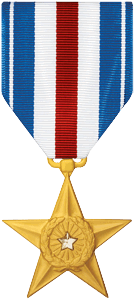 |
Kenneth R. DAYHOME OF RECORD : Danville, New Hampshire
AWARDS BY DATE OF ACTION : Silver Star
(Citation Needed) - SYNOPSIS: Private First Class Kenneth R. Day (ASN: 31110989), United States Army, was awarded the Silver Star (Posthumously) for gallantry in action in connection with combat operations against the enemy while serving with Company D, 18th Infantry Regiment, 1st Infantry Division in the Mediterranean Theater of Operations during World War II. | ||||||
Activated/Activé |
Normandy/Normandie |
| 17 Jun 1917 | Days of Combat/Jour de Combat 443 |
| Casualties/Victimes 20 659 | |
Entered Combat/Entré au combat |
|
| 8 Nov 1942 North Africa | |
|
Commanding Generals/Commandants généraux Maj. Gen. Donald Cubbison (Feb 41 - Aug 42) |
Campaigns/CampagnesAlgeria-French Morocco (8 Nov 42 - 11 Nov 42)
|
PLAN DE ROUTE DE LA CAMPAGNE de MEDITERANNEE - CAMPAIGN ROUTE MAP |
|
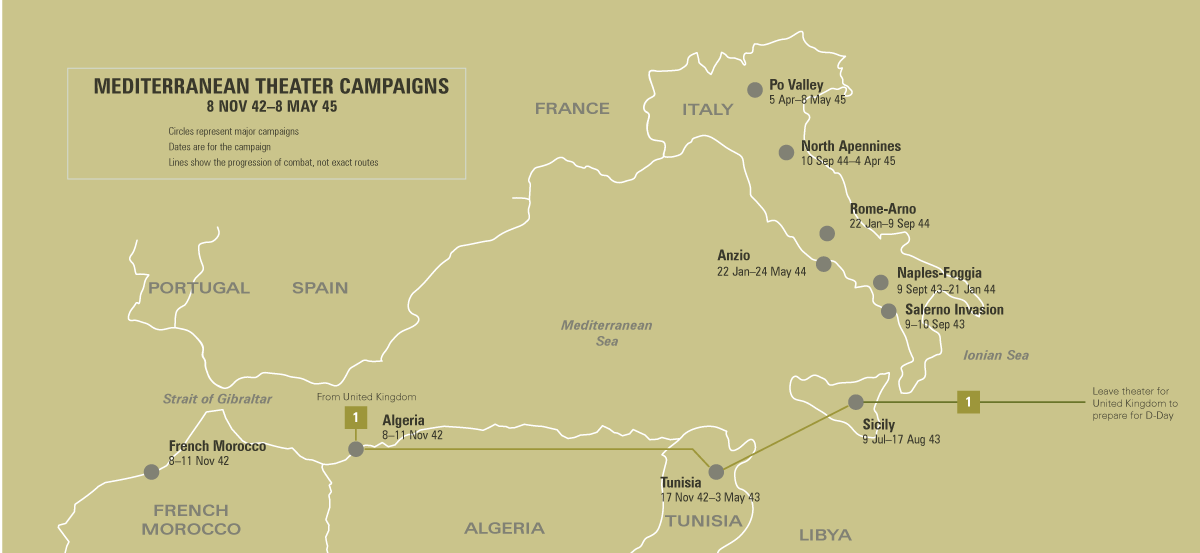 |
|
PLAN DE ROUTE DE LA CAMPAGNE - CAMPAIGN ROUTE MAP |
|
 |
|
DIVISION CHRONICLEThe 1st Infantry Division saw its first combat in World War II in North Africa, landing at Oran and taking part in the initial fighting, 8-10 November 1942. Elements then took part in seesaw combat at Maktar, Medjez el Bab, Kasserine Pass, Gafsa, El Guettar, Beja, and Mateur, 21 January-9 May 1943, helping secure Tunisia. The First was the first ashore in the invasion of Sicily, 10 July 1943 ; it fought a series of short, fierce battles on the island's tortuous terrain. When that campaign was over, the Division returned to England to prepare for the Normandy invasion. The First Division assaulted Omaha Beach on D-day, 6 June 1944, some units suffering 30 percent casualties in the first hour, and secured Formigny and Caumont in the beachhead. The Division followed up the St. Lo break-through with an attack on Marigny, 27 July 1944, and then drove across France in a continuous offensive, reaching the German border at Aachen in September. The Division laid siege to Aachen, taking the city after a direct assault, 21 October 1944. The First then attacked east of Aachen through Hurtgen Forest, driving to the Roer, and moved to a rest area 7 December for its first real rest in 6 months' combat, when the von Rundstedt offensive suddenly broke loose, 16 December. The Division raced to the Ardennes, and fighting continuously from 17 December 1944 to 28 January 1945, helped blunt and turn back the German offensive. Thereupon, the Division attacked and again breached the Siegfried Line, fought across the Roer, 23 February 1945, and drove on to the Rhine, crossing at the Remagen bridgehead, 15-16 March 1945. The Division broke out of the bridgehead, took part in the encirclement of the Ruhr Pocket, captured Paderborn, pushed through the Harz Mountains, and was in Czechoslovakia, at Kinsperk, Sangerberg, and Mnichov, when the war in Europe ended.
|
CHRONIQUE DE DIVISIONLa 1ère Division d'infanterie vit son premier combat en Afrique du Nord lors de la Seconde Guerre mondiale, débarquant à Oran et prenant part aux combats initiaux, du 8 au 10 novembre 1942. Les éléments participèrent ensuite aux combats en balançant à Maktar, Medjez el Bab, Col de Kasserine, Gafsa, El Guettar, Beja et Mateur, du 21 janvier au 9 mai 1943, contribuant à la sécurisation de la Tunisie. Le premier a été le premier à terre dans l'invasion de la Sicile, le 10 juillet 1943; il a combattu une série de batailles courtes et féroces sur le terrain tortueux de l'île. Quand cette campagne fut terminée, la Division revint en Angleterre pour se préparer à l'invasion de la Normandie. La première division a attaqué Omaha Beach le jour J, le 6 juin 1944, certaines unités subissant 30% de pertes au cours de la première heure et sécurisant Formigny et Caumont dans la tête de pont. La Division a suivi la percée de Saint-Lô avec une attaque sur Marigny, le 27 juillet 1944, puis a traversé la France dans une offensive continue, atteignant la frontière allemande à Aix-la-Chapelle en septembre. La Division a assiégé Aix-la-Chapelle après un assaut direct, le 21 octobre 1944. Le Premier a ensuite attaqué à l'est d'Aix-la-Chapelle par Hurtgen Forest, jusqu'à la Roer, et s'est installé dans une aire de repos le 7 décembre pour son premier repos. combat de mois, quand l'offensive de von Rundstedt se déchaîna subitement, le 16 décembre. La division a couru vers les Ardennes, et combat continuellement du 17 décembre 1944 au 28 janvier 1945, a aidé à émousser et à retourner l'offensive allemande. La Division attaqua de nouveau la ligne Siegfried, traversa la Roer, le 23 février 1945, et se dirigea vers le Rhin, traversant la tête de pont de Remagen, du 15 au 16 mars 1945. La division sortit de la tête de pont. dans l'encerclement de la poche de la Ruhr, capturé Paderborn, poussé à travers les montagnes du Harz, et était en Tchécoslovaquie, à Kinsperk, Sangerberg et Mnichov, lorsque la guerre en Europe a pris fin.
|
| SOURCE INFORMATION & PHOTO | Armydivs.squarespace.com |
|---|
| SOURCE INFORMATION & SOURCE PHOTO | Aad.archives.gov - Findagrave.com - Abmc.gov - Nhdsilentheroes.org - Fold3 - Valor.militarytimes.com |
|---|---|
| PROGRAMMEURS | Eric, Henri, Garrett, Clive, Frédéric & Renaud |


